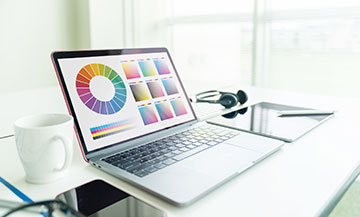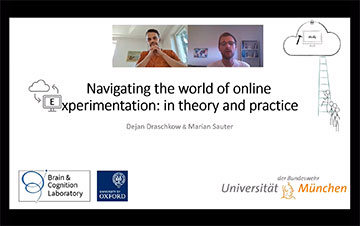
Getty Images
In a webinar hosted by the OSA Color and Display Technical Groups on 26 August, seven speakers explored the intricacies of display calibration and conducting visual and color research experiments online. The 90-minute webinar, entitled “Display calibration for internet and at-home human vision, visual perception and color research,” closed with a lively panel discussion that reflected the rising interest in out-of-lab research that has accompanied the coronavirus pandemic.
Pandemic response
Speaking to the timeliness of the topic, OSA Color Technical Group Chair Manuel Spitschan, Oxford University, U.K., said, “COVID-19 has caused many researchers to become more creative in running experiments not in the lab.” However, he noted that the pandemic is not the sole driver, saying that momentum to develop methods for running experiments online has been building for years due to the capability for much larger sample sizes.
Of course, some elements of lab research don’t translate easily to online settings. This holds particularly true for color and visual-perception researchers, who would typically use a spectrometer to fully control the stimuli and the conditions in which they are presented in a laboratory setting.
One reason for hosting the webinar, said Spitschan, was to see if the existing suite of digital resources could meet this challenge when testing psychophysical observers in an online format. Spitschan also hopes that progress in this area could aid students as they collect data and try to finish their Ph.D. programs while facing ongoing coronavirus-related lab closures.
From lab to laptop

Dejan Draschkow and Marian Sauters gave a contributed talk on building, hosting and recruiting for online experiments.
After an invited talk by Thomas Lianza, Portrait Displays, USA, on internet and at-home display calibration, two contributed talks delved into some real-world examples of online experimentation. Dejan Draschkow, University of Oxford, and Marian Sauter, Bundeswehr University Munich, Germany, shared some tips for navigating online lab work in behavioral science.
Why online testing?, they asked. The modality offers easier recruitment of large samples, efficient data collection, increased sample diversity and the potential for cross-cultural studies. As for negatives, Draschkow and Sauter noted, there are more distractions when testing online, so it’s important to keep the subject’s attention on the screen, or perhaps to even “gamify” the experience to try and obtain at least 70%–80% usable data.
The researchers laid out some steps to take experimenters “from 0 to online” and provided platform and tool suggestions to get started. Inquisit, Labvanced and Testable are examples of all-in-one providers, or separate services are available to build the experiment, host the data and recruit participants.
Let’s get psychophysical

Manuel Spitschan, Chair of the OSA Color Technical Group.
Dan Coates, University of Houston, USA, spoke next about his experience conducting “remote, yet connected” psychophysics over the web. Due to COVID-19, Coates said, classically hands-on optometry teaching labs required an overhaul. He developed a closed-loop, peer-to-peer system where students could experience being both the experimenter and the subject. Coates used the service PeerJS for peer-to-peer connectivity and custom-built the experiment with the programming language JavaScript.
Closing out the webinar, Allie Hexley of the University of Oxford reviewed perceptual calibration methods for online experiments with visual stimuli. She began by breaking down the four features of visual stimuli that can be displayed in an experiment: luminance, contrast, spatial frequency and color. Hexley concluded that while all of these factors can be controlled to some degree, absolute luminance is not measurable without a photometer and color is device dependent, introducing reproduction errors. When asked about experiment reliability considering such limitations, Hexley stated that if you’re aware of the limits, then you can design your experiments around them—a theme hit upon by several of the webinar’s speakers.
Other contributed talks included: “Visual display calibration based on psychophysical judgements,” “Methods for calibrating a display without a photometer,” and “Considering observer metamerism in online display calibration.” A recording of the webinar is available online.
